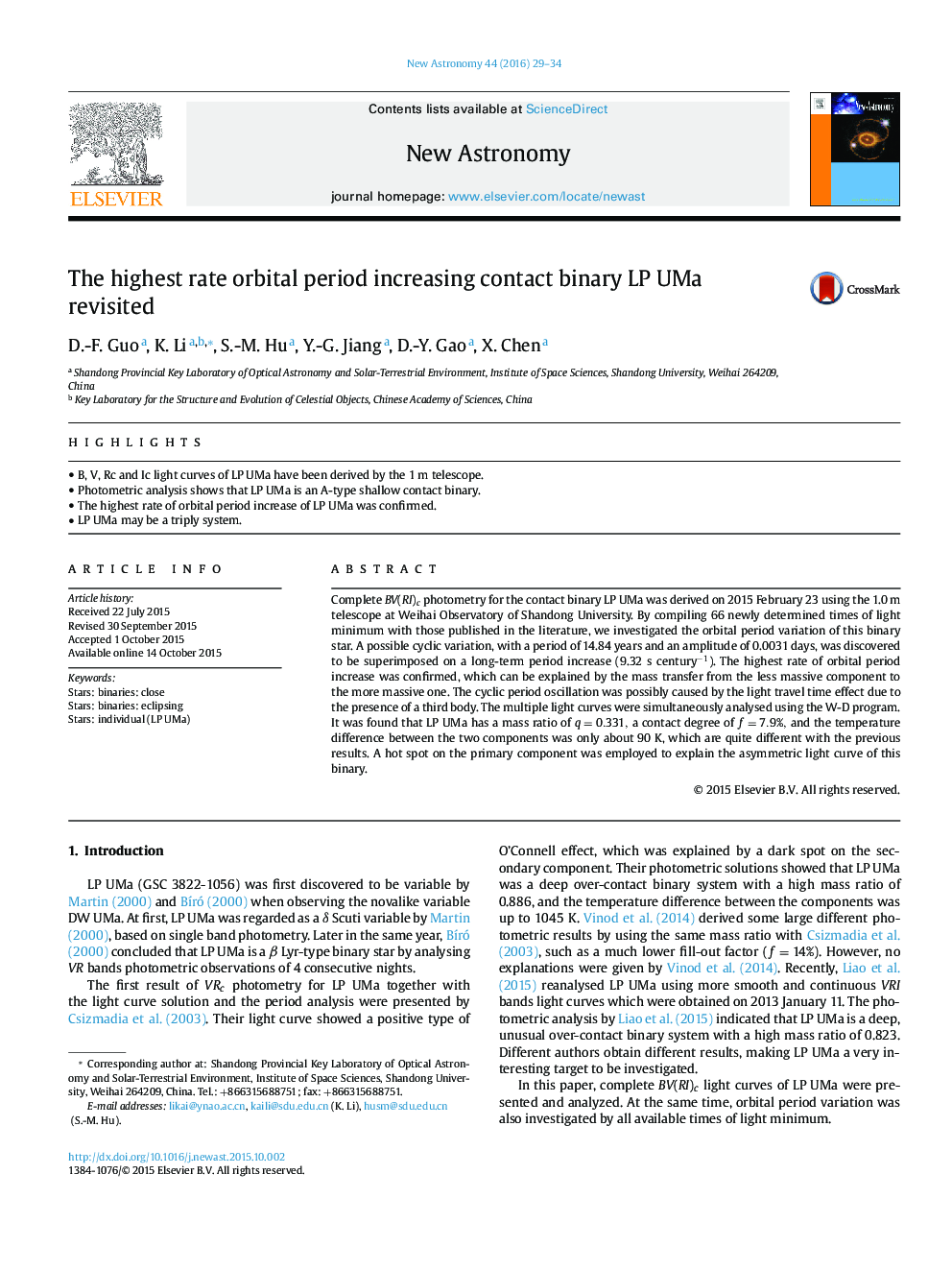| Article ID | Journal | Published Year | Pages | File Type |
|---|---|---|---|---|
| 1778814 | New Astronomy | 2016 | 6 Pages |
Abstract
Complete BV(RI)c photometry for the contact binary LP UMa was derived on 2015 February 23 using the 1.0Â m telescope at Weihai Observatory of Shandong University. By compiling 66 newly determined times of light minimum with those published in the literature, we investigated the orbital period variation of this binary star. A possible cyclic variation, with a period of 14.84 years and an amplitude of 0.0031 days, was discovered to be superimposed on a long-term period increase (9.32Â s centuryâ1). The highest rate of orbital period increase was confirmed, which can be explained by the mass transfer from the less massive component to the more massive one. The cyclic period oscillation was possibly caused by the light travel time effect due to the presence of a third body. The multiple light curves were simultaneously analysed using the W-D program. It was found that LP UMa has a mass ratio of q=0.331, a contact degree of f=7.9%, and the temperature difference between the two components was only about 90Â K, which are quite different with the previous results. A hot spot on the primary component was employed to explain the asymmetric light curve of this binary.
Related Topics
Physical Sciences and Engineering
Physics and Astronomy
Astronomy and Astrophysics
Authors
D.-F. Guo, K. Li, S.-M. Hu, Y.-G. Jiang, D.-Y. Gao, X. Chen,
